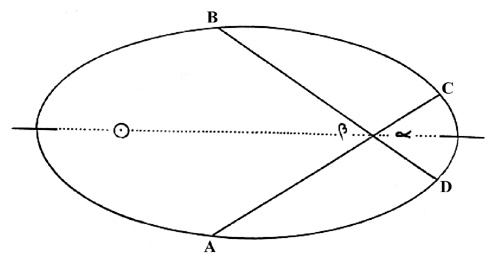
Kepler’s equant law suggests that if a planet sweeps out equal angles in equal times with respect to the kenofocus (empty focus F), it will pass through arcs AB and CD in equals times, since angles alpha and beta are equal. Hence a given planet moves faster along arc AB (perihelion) than arc CD (aphelion). However, Kepler’s vicarious hypothesis required a circular orbit rather than an ellipse. Kepler’s vicarious hypothesis employed eccentric motion without employing Ptolemy’s famous bi-section of the eccentricity. Such a construction results in errors of about 7.5′ at the octants of the planetary path.